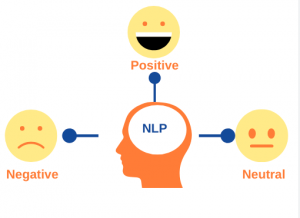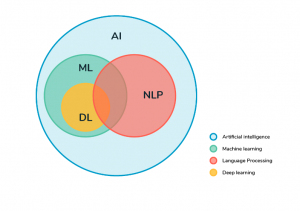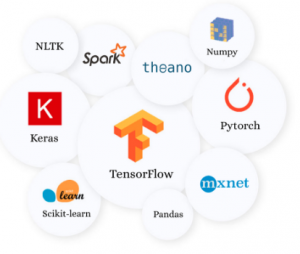In the vast landscape of human communication, Sentiment Analysis and Natural Language Processing (NLP) stand as pillars of understanding, unraveling the intricate threads of emotions woven into our words. This comprehensive exploration delves into the symbiotic relationship between Sentiment Analysis and NLP, shedding light on methods, models, and the impactful role they play in our digital interactions.
What is Sentiment Analysis in NLP?
Sentiment Analysis, a facet of NLP, is the art of discerning emotions and opinions embedded in textual data. Beyond merely understanding language, it dives deep into the emotional nuances within words. As Victor Hugo eloquently puts it, “Words have meaning, and names have power.” Sentiment Analysis in NLP goes beyond the surface, deciphering the emotional power concealed in our expressions, allowing machines to grasp the intricate tapestry of human sentiment.

The Relationship Between Sentiment Analysis and Natural Language Processing
Sentiment Analysis finds its roots intertwined with the broader field of NLP, creating a dynamic synergy. NLP empowers machines to interact, comprehend, and generate human-like language. In this dance of understanding, Sentiment Analysis adds the emotional layer, allowing machines not only to comprehend words but also to grasp the sentiments and nuances, mirroring the complexity of human communication. Together, they create a bridge, enabling machines to understand language in its entirety.
Sentiment Analysis Methods
Sentiment Analysis employs various methods, each offering unique strengths. Rule-based methods rely on predefined rules to determine sentiment, while machine learning methods leverage algorithms trained on data to discern patterns. Deep learning models, such as Recurrent Neural Networks (RNNs) and Transformers, have emerged as powerhouses in capturing intricate language relationships. Choosing the right method often depends on the complexity of the task and the nature of the data.

Sentiment Analysis Models
In the ever-evolving landscape of Sentiment Analysis, models play a pivotal role. From traditional models to state-of-the-art deep learning architectures, each contributes to the evolving toolkit. As Maya Angelou aptly notes, “Words mean more than what is set down on paper.” Sentiment Analysis models strive to capture the depth of these meanings, allowing machines to navigate the emotional terrain of language.
Which NLP Model is Best for Sentiment Analysis?
The realm of NLP boasts several powerful models, each with its unique strengths. BERT (Bidirectional Encoder Representations from Transformers) and GPT (Generative Pre-trained Transformer) are pioneers in this space. Their ability to understand context, nuances, and sentiments makes them valuable assets in Sentiment Analysis.
Choosing the best model depends on the specific requirements of the task at hand, balancing accuracy and computational efficiency.
What is Natural Language Processing for Text Analysis?
Natural Language Processing extends beyond Sentiment Analysis to encompass a broader spectrum of text analysis tasks. From Named Entity Recognition (NER) to text summarization, NLP techniques empower machines to extract meaningful information, derive insights, and generate coherent language. In the realm of information processing, NLP becomes the guiding force, enabling machines to comprehend and utilize textual data effectively.

Sentiment Analysis and Natural Language Processing in Python
Python emerges as the language of choice for implementing Sentiment Analysis and NLP. Libraries such as NLTK, spaCy, and transformer models facilitate the integration of various methods and models. Python’s versatility and expansive ecosystem empower developers and data scientists to seamlessly weave sentiment analysis into applications, fostering innovation and user-centric solutions.

Sentiment Analysis and Natural Language Processing Example
To illustrate their practical application, consider a scenario where social media content undergoes sentiment analysis. NLP techniques enhance this process by enabling the system to understand colloquial language, identify key entities, and provide actionable insights. This real-world example showcases the collaborative prowess of Sentiment Analysis and NLP in elevating information extraction and decision-making.
In conclusion, the marriage of Sentiment Analysis and Natural Language Processing heralds a new era in human-machine interaction. As we traverse the landscape of digital communication, understanding emotions becomes not just a possibility but a necessity. Through their symbiotic relationship, Sentiment Analysis and NLP pave the way for machines to comprehend the complexities of human expression, forging a future where technology mirrors the richness of human communication.